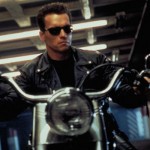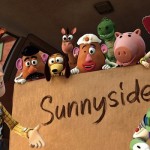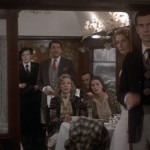Dial M for Murder Review
One of Alfred Hitchcock’s greatest strengths was his ability to manage enormous set pieces and make them extremely memorable. Take the plane crash scene in Foreign Correspondent, the Royal Albert Hall scene in The Man Who Knew Too Much, or the crop duster chase in North by Northwest. Ironically, one of the Master of Suspense’s finest hours came with 1954’s Dial M for Murder, which takes place almost exclusively in one London apartment. It’s a testament to Hitchcock’s incalculable skill that he manages to cram so much tension into every frame and every word, while his delightfully rich characters populate this tiny space. As a result, Dial M for Murder is an achievement of the highest order and one of Hitchcock’s best films.
Tony Wendice (Ray Milland) is a retired tennis pro who has reached a breaking point in his marriage. His wife, Margot (Grace Kelly), has been cheating on him with an American, Mark (Robert Cummings), and though Tony has suspected something for quite a while, he’s finally decided to act. But rather than divorce her and lose his affluent lifestyle (his money is all his wife’s), he decides to hire a man to murder her. The plan seems flawless, but things go wrong, and Margot ends up killing the murderer. On the fly, Tony rethinks the plan and comes up with another seemingly flawless one to frame his wife for killing the man out of revenge.
Ray Milland, I think, was born to play this role. He’s such a chilling villain that we almost root for him to succeed. He delivers every line with such ease and confidence that you’d never expect him to be a total sociopath. While most probably remember him for his great, Oscar-winning work in The Lost Weekend, his might be the actor’s finest performance.
As far as acting goes, Milland does most of the heavy lifting, but he’s not the only star. Grace Kelly has a surprisingly thankless role as Margot, so she’s a bit of a non-starter in this case. The other star, as far as acting is concerned, is John Williams as the Chief Investigator. He, like Milland, plays everything so cool. It’s a role that could have been a throwaway, but Williams makes him memorable—especially the closing shot, which was just fantastic.
Of course, no one in this film is outshining Hitchcock and his brilliant direction. Every camera angle and cut is a deliberate tool to build tension. See the murder scene for evidence of this. It’s the only time the film moves away from the apartment, and as we transition from a panicked Tony to scene of the crime, we’re on the edge of our seat.
It would have been interesting to see Dial M for Murder in 3-D, like it was originally released. It’s not the kind of film you’d think should be in 3-D, but it’s the only instance in which Hitchcock used this technology. But 3-D or 2-D, this is a brilliant film that is a must-see for all Hitchcock fans.















